I don’t think it’s fair to write about print design without covering the printing process as well, so I think it’s about time I head straight for the workshop and explain some of the various printing practices out there. To begin, there are literally dozens of ways to get something (words, pictures, shapes) printed onto a material (cloth, wood, paper). Of course, these days most printing happens with a digital press and involves the not-so-complicated process of printing a Microsoft Word document onto a piece of 8.5 X 11 inch paper. However, this was not always so.
The oldest form of printing is woodblock printing. And yes, you guessed it, it’s the process of printing an image using a wooden block. This ancient form of printing dates back to as early as 220 AD and originated in eastern Asia. Simply put, woodblock printing involves carving shapes or characters into a piece of wood, inking this wood up with a substance (typically water-based and made with minerals) and pressing this wood into cloth or wood. From Asia, this technique spread and gained popularity over a number of years. In Europe, the technique was typically called “woodcut” printing as opposed to woodblock, but the general concept remains the same. Famous prints like “The Great Wave off Kanagawa” by Japanese artist Hokusai were printed using woodblock method and colored ink, so as to deliver a more three-dimensional and artistic print.
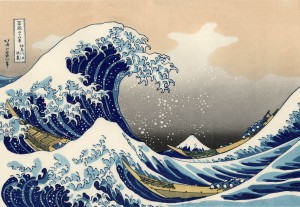
From woodblock printing, there came the process of movable type. Movable type makes the most sense if you think of it like stamps. Individual images, letters or numbers were created on wood or metal and because they were separated, could be used like stamps to create prints of words or ideas on paper, cloth or other organic material. From movable type we saw the invention of the printing press. After the printing press, print design became more artistically significant, with new methods of printing focusing less on the written word and more on image creation. Processes like the cyanotype, mezzotint, and aquatint became popular. These processes involve various methods of printing that result in elaborate images created by artists.
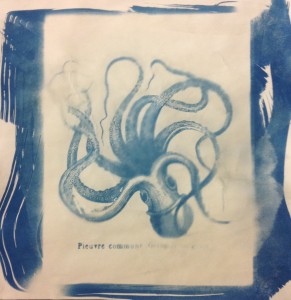
One of the most popular forms of print design comes in the form of lithography. Created in 1796 by German author Alois Senefelder, lithography is the process of printing with a flat stone or smooth metal surface. This process is different from other printing processes that involve engraving or etching surfaces (like wood) with a design and then creating ink prints with the carving, because lithography involves using a completely smooth surface. The Tamarind Institute, which is now an affiliate of the University of New Mexico, began in Los Angeles in 1960 as a Lithography Workshop. Now, the Tamarind Institute is a collaboration between artists and master printers that strives to keep the art of lithography alive. Upon visiting this institute, I learned a great deal about the complicated process of lithography printing. Lithography is unlike any other sort of printing because, as said before, it does not involve an engraved or etched surface but instead involves a smooth surface. This may seem to make no sense, but that’s because lithography involves a scientific process instead of the process of carving or etching.
Lithography is the process of transferring an image drawn onto a flat stone onto a piece of paper using the chemical interaction of grease, nitric acid, gum arabic, and water. At the Tamarind Institute, an artist draws an image (in reverse) onto an aluminum plate or fine-grained limestone. This image is drawn with tools high in grease content, as they won’t show up in the final print without this element of oil. After this point, the artist’s job is complete and the master printer takes over. The printer chemically treats the stone or plate with rosin to protect the drawing, powders the surface with talc and applies an etch to the stone (an etch is a solution of the gum arabic and nitric acid previously mentioned). After wetting the stone, a press is rolled with ink and prints are created. This process can take days, because multiple proofs of the image may be created in order to get the image perfected by both printer and artist.
One of the most exciting things about lithography is that once an image has been created on stone or plate it can be reprinted over and over again. At the Tamarind Institute, only a certain number of prints are created from each artist’s stone, increasing the value of the lithograph because of its rarity. Once enough prints (called editions) have been created, the stone or plate that was utilized is sanded down until the image is no longer in existence. After this grinding away of the first image, another image can easily be created on the stone (so these giant slabs of stone are easily reusable). This process is just one example of the many various printing processes out there, but warrants mention in this project because of its importance at UNM.
It’s interesting that today, in a world of digital technologies and ease of printing by digital methods, people still spend so much time working with various old printing techniques and create amazing artwork with them. Four hundred years ago, processes like lithography and woodblock printing would have had a specific purpose, and today the processes are a form of art kept alive by those passionate about keeping printing practices alive. The importance of old printing techniques is that they show how old techniques can still be used to create something new and artistic, and also show how advances in print design have had a great effect on our lives. We can create marketing campaigns, newspapers and other forms of print in mere minutes thanks to new methods of printing like the digital press, but it is important to remember the past of print design as well.
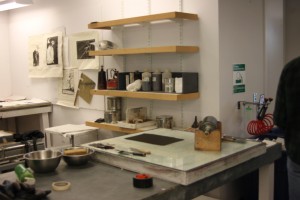
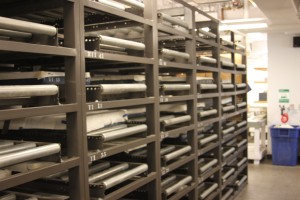
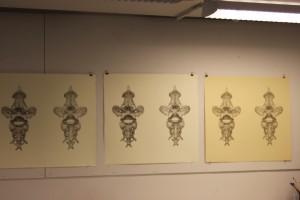
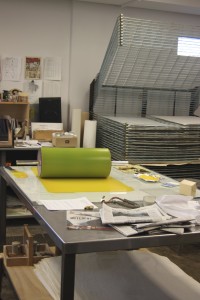
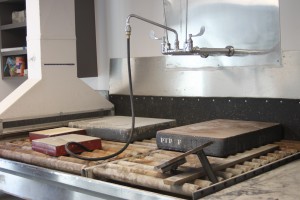
Visit the Tamarind Institute in Albuquerque for a guided tour and more information on lithography or visit http://tamarind.unm.edu/ for more information.